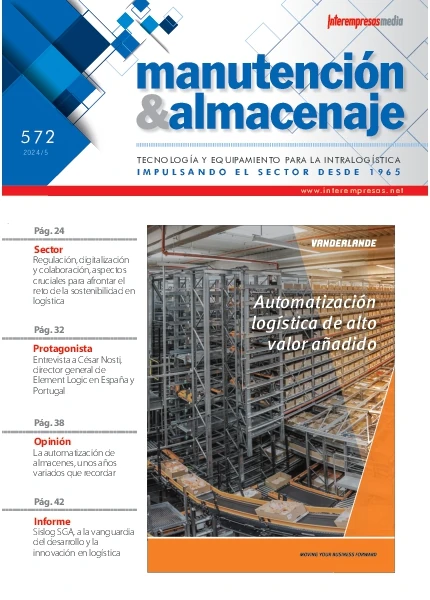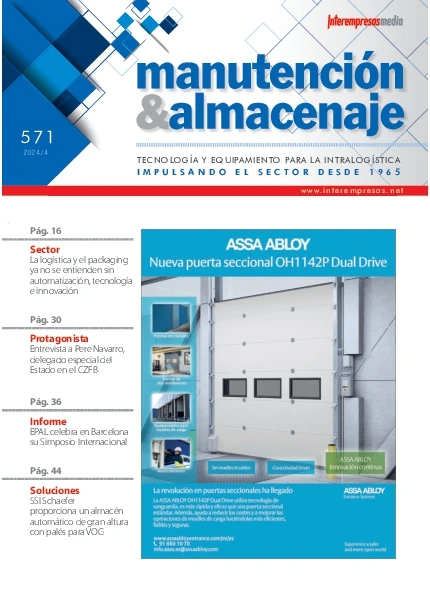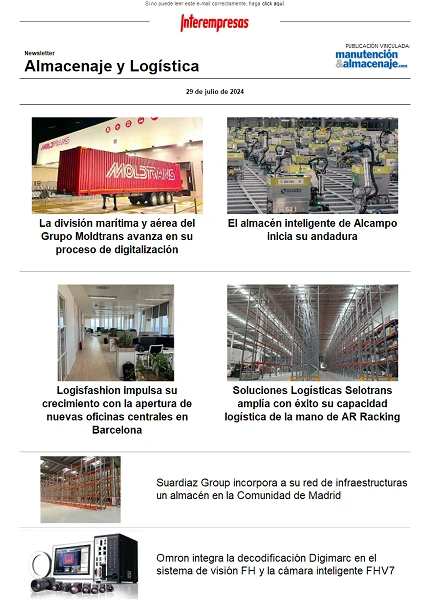Spain, a strategic enclave for international shipping
June 16, 2010
The Spanish port system of State-owned is composed of 44 ports of general interest, managed by 28 port authorities, whose coordination and control of efficiency Puertos del Estado, dependent of the Ministry of public works body corresponds to the public body. As dato emphasized, it should be noted that ports channelled 70% of the Spanish foreign trade and almost 15% of the inland transport.
Bilbao: the door of the Atlantic route
The port of Bilbao, located at the eastern end of the Bay of Biscay is part of the so-called European Atlantic arch. Its geographical location set you a port's link with the American continent, Northern Europe, Africa and Middle East, specially prepared to trade with the Atlantic from Europe, the British Isles facade and the Baltic Sea.
The port of Bilbao, with its companies, makes up a distribution center of goods from mainland interest, located in an environment of Metropolitan of a million people and 16 million inhabitants within a radius of 400 kilometres. In addition, it provides an avenue of indisputable approximation towards the European market of the Atlantic arc. More than two hundred companies and 5,000 people make up the industial sector Bilbao, and make the main multimodal Centre in the North of the Iberian Peninsula from the port of Bilbao.
The industrial and economic configuration of the region in which it is situated, together with the system of communications infrastructures and logistics of their economic space, provide areas of opportunity for business related to the industry, trade and distribution. Rail operators who work in the port of Bilbao offered more than 50 weekly departures with areas of Azuqueca de Henares, Madrid, Valencia, Barcelona, Valladolid, Burgos, etc.
In Bilbao are represented more than 200 direct maritime services and feeder in all its versions: containers, break bult, projects, ro-ro, mixed and tanks. Bilbao is a specially prepared for intra-European maritime traffic. More than 18 million tonnes per year of all kinds of products are handled in the Maritime Terminal of the port of Bilbao with Europe. In addition to the products (coals, turnings) bulk steel products, the paper, the spare parts for cars, wines and drinks, tiles and construction material are products with greater volume of traffic. However, there are more than 1,000 tariff headings using the maritime services between the port of Bilbao and Europe, services adapted to the needs of the burden, on occasions, as demanding as fruits, vegetables and other perishables.
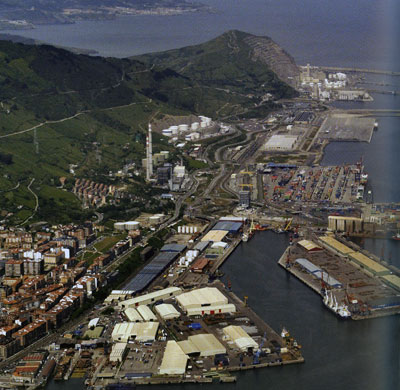
Valenciaport: a port, a thousand doors
The port authority of Valencia (VPA), under the trade name of Valenciaport, is the public body responsible for the management and administration of three State-owned ports located along 80 kilometers on the eastern edge of the Spanish Mediterranean: Valencia, Sagunto and Gandia.
This combination set up one of the leading Spanish ports of the Mediterranean in commercial traffic, mainly goods in container, thanks mainly to an area of dynamic influence and an extensive network of connections with the main ports of the world. Valenciaport is characterized by a port cohesive community, through innovations such as the mark of assurance and the transactional area of the Valenciaport Portal - valenciaportpcs.net - and formed by all public and private actors that provide their services through the ports of ValenciaSagunto and Gandia.
Valenciaport enjoys an enviable position in the Iberian peninsula which turns him into its natural harbour for the interoceanic traffic of goods. Also, its privileged geostrategic position in the Centre of the Mediterranean area west, in line with the corridor maritime East-West through the Suez Canal and the Strait of Gibraltar, positioned you as first and last level of the main ferry line companies regularly between Americathe Mediterranean basin and the far East.
Valenciaport is the main commercial port of the Western Mediterranean in terms of volume of containerized goods. During 2008, 59.7 million tons passed through the ports of Valencia, Sagunto and Gandía, 11,48% more than in the year 2007 - figures that they consolidate the leadership of Valenciaport-. In terms of container traffic, Valenciaport is the first trading port of Spain and is among the top ten ports in Europe and fifty ports in the world in the movement of containers.
To support this level of activity, Valenciaport has specialized facilities for high-performance for all types of traffic (liquid bulk, bulk solids, conventional general cargo, containerizada general goods and passengers), with more than 12,000 metres of quays with draughts of up to 17 meters that allow the scale of the largest container vesselsmore than 30 gantry cranes, specialized in the handling of general merchandise containerizada and not containerizada and 300 hectares of deposit. In addition, Valenciaport has an advanced network of connections by road and rail (free toll Madrid Highway) that joined with the main production centres of the peninsula. It also has access to the international airport in less than 15 minutes.
Therefore, Valenciaport plays an important role in the economic development of their area of influence. It is estimated that it generates, directly or indirectly, more than 15,000 jobs and activity amounting to more than 1.1 billion euros.

Musel, Gijón port
Situated on the Cantabrian coast the port of Gijón is excellent maritime communications as well as land (road and railway). It is directly connected with the national motorway network and an important railway infrastructure which connects port facilities with the Spanish railway network. It has a specific railway terminus for the traffic of containers (Teco). Its sheltered waters and wide maritime access, allow entry of large ships 365 days a year. In addition, stands as one of the main Spanish ports in movement of bulk and has lived in the last years a profound renovation, by adopting the most modern systems of planning and strategic management of the Spanish port system. The above models, joined the works underway at El Musel - which will double the surface of the industrial and energy port of Asturias-will strengthen its role of piece key of economic development and industry of the region, both by its dimension and by the creation of new terminals and attracting trafficthat they represent a business opportunity for entrepreneurs of Asturias and its hinterland. The port of Gijón expansion promotes its positioning as a major port of the peninsular Northwest. Its centrality in the Cantabrian cornice, in the southern part of the Atlantic Arc, together with the new sizing of the Musel make a clear business opportunity for entrepreneurs who perform or study perform movements import-export of any merchandise.
In addition, the future of El Musel does not end in their regional boundaries. The port of Gijón is called on to expand its links with the hinterland and, in particular, as a natural outlet of numerous companies in Castile and León, Spain. All this within a framework of institutional collaboration, evidence of the agreement concluded with the Junta de Castilla y León for the development of its logistics network (CyLog), as well as the cooperation agreements signed with the Chambers of Commerce of LeónZamora and Valladolid.

Also, the port of Gijón is connected to the main ports on five continents. Opening and consolidation of five regular container lines have attracted up to El Musel international shipping companies that connect with more than 200 ports around the world. As a basic complement to port infrastructure and modernization of its facilities, is being developed since the beginning of 2005 a logistics activities and industrial area near the port. It's Zalia, connected to the port by rail and road with direct access to the Renfe and Feve lines, as well as the motorway A-66 and has an initial residential area of 400,000 square meters which will be expanded in accordance with the needs.
The port also plays an important role of the Asturian economy engine. Currently it provides more than 10% of regional GDP, with more than 3,500 cards daily users of port facilities.
Huelva: a modern, environmentally friendly port with the environment
The port of Huelva is currently facing new challenges, such as the uptake of new traffic to diversify their activity and the introduction of regular lines. To achieve this account with adequate infrastructures, which have been reinforced with the construction of a new maritime terminal and a port community committed to the development of Huelva as a complex port, modern, economic, environmental-friendly and competitive at the international level.
The main objectives of the Huelva port referred to in its strategic framework include the of consolidate and develop the port activity on the basis of its current traffic by improving infrastructure and port services. The traffic of goods by the port of Huelva has 20 million tons, turnover that consolidates the growth initiated in previous years and maintains the port prominently within the Spanish port system. Improvements in infrastructure include the remodelling of the loading of ore, with about 1 million square meters of area for the storage, rail network until the cantil of the pier and the highway free from toll to the rest of Andalusia, the peninsular Centre, Portugal and soon with Extremadura.
Another of the strategic objectives of the port of Huelva is the put the bases of a diversification in the medium term, taking advantage of the opportunities for infrastructure and soils and the potentialities of the hinterland. Thus, the area of future activities has 200 hectares of available land, with projected a new terminal for containers. The 750 m line of docking with the port is expandable to 2,000 meters. It also has 13 metres of draught in dock, an area for warehouses and direct connection to Highway and rail.
The third objective is the project internationally to Huelva as the basis of an industrial-portuario complex modern, competitive and specialized in treating environmentally friendly and integrated with the environment, both of industry and of the port and transport. To do so participates in the most important environmental management projects that are being developed in the port system, such as for example the draft assessment of environmental risks, which seeks to meet the environmental risks associated with the port activity, as well as its likelihood of occurrence and the media to be used to prevent them and eventually mitigate their effects. In terms of management of the dragados, the port of Huelva is the Spanish representative in the Committee on the environment of the PIANC (Navigation, Ports, Waterways - Navigation, ports and navigable routes). It also participates in the implementation of the fairy project for the environmental upgrading in port and prevent the contamination of particles in the work of unloading of goods, as well as be registered with the internal Contingency Plan by Accidental marine pollution in the RIA of Huelva.
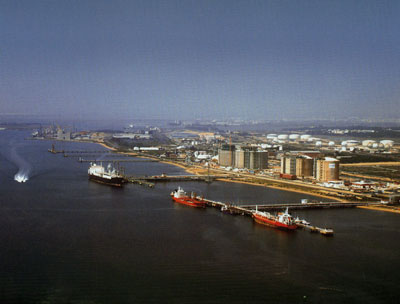
Cartagena: two in one
The port of Cartagena is formed by two independent docks: of Cartagena, where are concentrated the port traffic of general merchandise, cruises, fishing and nautical sport activities; and that of Escombreras, dedicated in its entirety to the industrial trades of goods both liquid and solid bulk.
In just 10 years, the port has increased its number of traffic by 250%, placing it within the Group of the most important ports in Spain. Traffic statistics have not only grown, but that also they have been diversified with new products, new goods and new challenges. Saint Lucia container terminal, for example, offers connections to any destination in the world by means of transfer in Algeciras and Barcelona and hotlines with the main ports of the Mediterranean and the Atlantic coast of North and Central Europe.
Also, the port of Cartagena was a pioneer in Spain with the first certification of the terminal of containers, and currently covers the traffic of general goods, containers and bulk solids under the norm ISO 9001; the environment, which also has a certification in accordance with the ISO 14000 standard; or job security, with a significant reduction in accidents.
The Cartagena dock container terminal has a 385 metres of berthing dock, 11 meters of depth and 127.174 square meters of total area. It is equipped with a crane container of 36 and 40 tons, with a reach of 11 and 13 manga of ship containers respectively and a yield of 25 containers per hour with each crane. It also has of Ro/Ro berth, terminal railway Renfe in the port and discovered store of 109.495 square meters.
Also, the general cargo terminal has a multi-purpose Wharf of 405 metres of berthing and 11 of draft. With a total area of 130.616 square meters, it has 30, 16, and 6 tonnes cranes and installation of cement bulk download. The port also offers a Terminal specifically for the goods fruit and vegetable, equipped with refrigerated warehouses with a capacity for 7,000 pallets and 10.550 cubic meters of storage capacity.
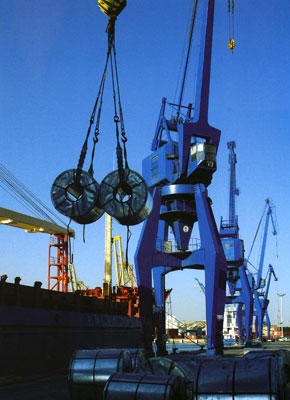
For its part, the dock of Escombreras offers terminals of bulk solids in the Prince Philip West Quay, with 180 meters in length and 11.90 draught and the Prince Philip South Pier, with 350 metres of berthing and 13,50 draught. Both piers have facilities for reception of cement in bulk, and the South Pier, in particular, also has warehouses and tanks for chemical fertilizers, bulk vegetable and mineral. The pier Isaac Peral, also for bulk solids, is ready to receive ships up to 60,000 TPM and has 5 stores closed with 19,200 square meters in total.
As for the terminals for Bulk liquids, they are prepared to operate with all types of refined oil and bio-ethanol, diesel and fuel oil or crude oil.
Escombreras dock is complemented by the area of industrial activities and logistics (Zail), where companies such as Cemex cement Western or Saras energy, operate or the area Industrial of the quagmire has, with companies such as Agrosur, AES Energy, Terliq, S.A. or Bunge Iberian.
The port of Cartagena has provided a couple of projects for the future: on the one hand the expansion of Escombreras, with 64 hectares of Esplanade and 2,600 meters of berth line; on the other the draft of a new dock in the Gorguel, which will enable the construction of a terminal for road traffic and thus connect networks of ground transportation with the motorways of the sea which promotes the EU.

